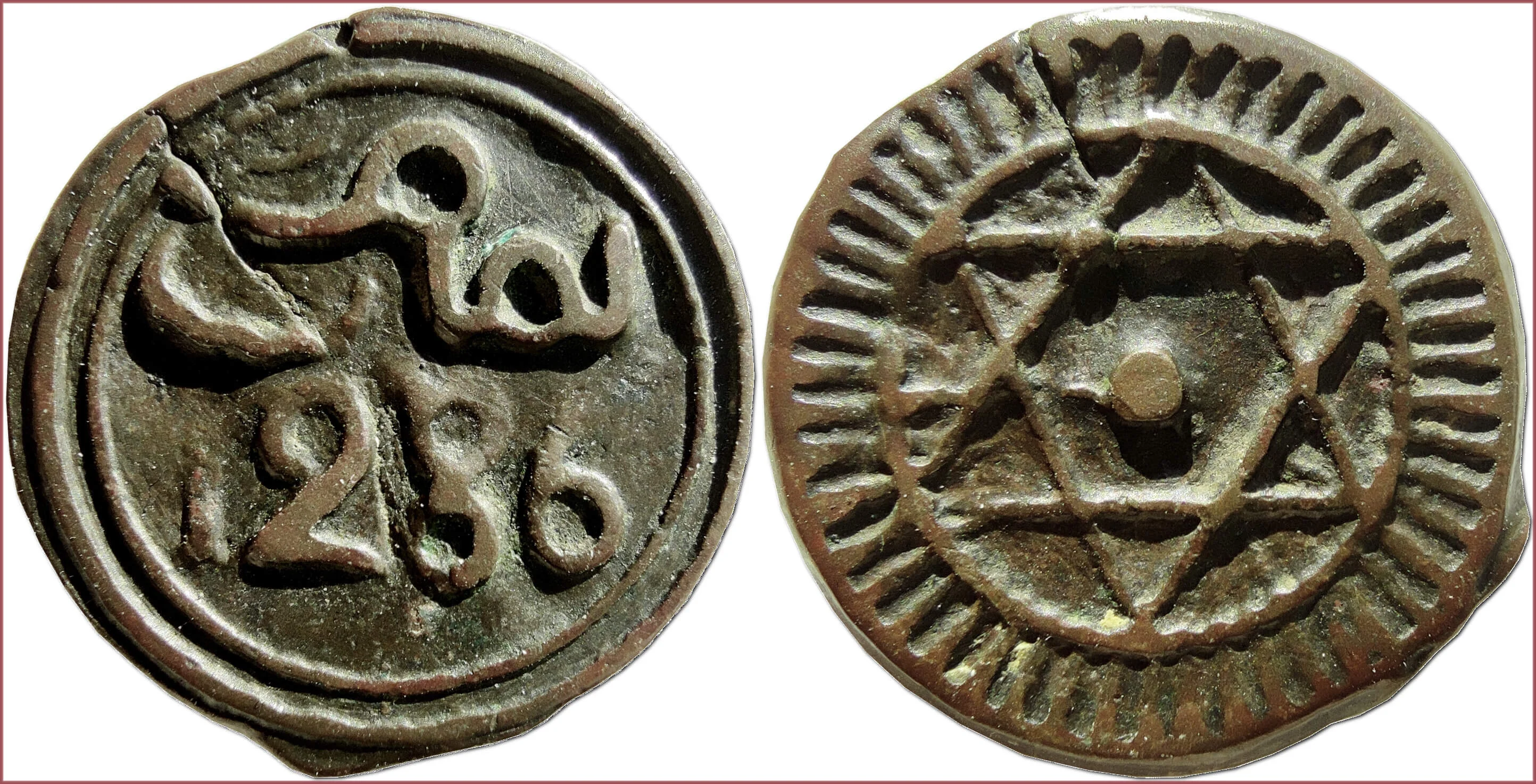FALUS: COIN OF MOROCCO
4 falus, 1869: Kingdom of Morocco
Ruler: Muhammad IV of Morocco — Sultan of Morocco from 1859 to 1873 as a ruler of the 'Alawi dynasty.
فاس ضرب: Mint name — Fez (the capital of Morocco in the 19th century).
1286: year of minting.
Date on coin: AH 1286 (AH: Latin "Anno Hegirae" — "the year of the Hijra"; Islamic calendar) = 1869/1870 (Gregorian calendar).
Star from the coat of arms of Morocco (the seal of King Solomon /Seal of Solomon/ — a symbol of wisdom).
Coin made by casting.
Extremely popular among numismatists coin (there are several varieties of this coin in the same design), probably due to the image of the Seal of Solomon — a well-known medieval mystical symbol.
- Bronze: 28 mm - 9.6 g
- Reference price: 10$
COIN FALUS — WHERE & WHEN (coins catalog: by names & emitents)
- KINGDOM OF MOROCCO (17th-20th centuries): bronze falus, silver dirham
- IDIA (Islamic States /Sultanate of Ahmadnagar, Sultanate of Bahmani, Sultanate of Bijapur, Sultanate of Sindh.../; Princely States; Mughal Empire — 14th-19th centuries): falus
- AFGHANISTAN (16th-20th centuries): falus = 1/64 rupee
- IRAN (17th-19th centuries): falus
- CENTRAL ASIA (Bukhara, Khiva — 19th-20th centuries): falus = 1/10 tenga
- CHINA (Sinkiang Province — 19th century): falus
About the name of the coin falus: the name of the coin falus probably comes from the Arabic term "fals" (plural: fulus), which in turn comes (just like fils) from the name of the ancient Roman coin follis.

